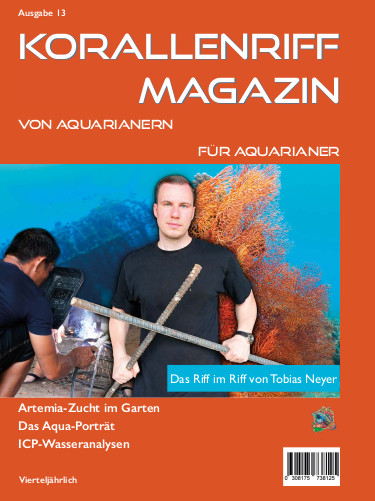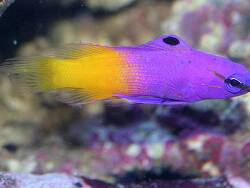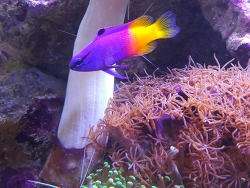Info
The King Fairy Perch - Gramma loreto is very popular with aquarists because of its pretty coloring and its inherently quite simple care. The Gramma loreto lives mainly object-oriented, as it can thus quickly disappear into crevices or holes in case of danger.
It quickly accepts frozen food and also flake food and is not very susceptible to diseases.
Gramma loreto should be kept as a pair !
A therefore very suitable fish for the community tank. Also very peaceful towards other tank inhabitants.
Sometimes they threaten other, small fish, but there are no attacks. As mentioned above, many hiding places in the form of caves should be provided.
Relocation of fairy bass should be done carefully, the fish tend to go into shock in the transport bag or after relocation, but this quickly resolves.
Sex and mating.
The sex of the fairy bass is fixed from birth, at least from a certain size / age. The male fish is larger than the female. A subsequent mating can succeed, but does not have to. Unfortunately, there are no scientific findings on this yet. Perhaps a subsequent mating is successful when the subsequent stocking is still very small.
If you have your own experiences or scientific reports on this, we would be very grateful for information.
Michael Riediger adds:
Regarding the statement that Gramma loreto likes to jump, I can say it is probably true with some specimens and in certain situations. After I had put a Gramma loreto into my reef tank, I immediately covered the tank with polycarbonate panes as a precaution. At first nothing happened:
The Gramma "sniffed" an already present, usually somewhat shy (!) Zebrasoma flavescens, then both swam together through the tank, without any aggression.
Finally the Gramma looked for a reef crevice, which he liked as a location.
Then in the evening, when the blue tubes were the last to go out, and only a moonlight was shining, I suddenly heard something "crashing" against a polycarbonate plate. When I immediately looked, the Zebrasoma was standing quietly at its "sleeping place" and the Gramma was just ducking back into the crevice it had chosen.
It must have been him who had jumped against the plate.
Also in the following days I left the covers in place, but found no further evidence of regular jumping, so after three days I could remove the plates.
Possibly it was a reaction to the strange environment.
Judging by the loudness of the crash, however, the Gramma would have achieved a good distance with his jump! ;-)
Robert Baur adds: We have been keeping 4 of them for a few years, 3 of which were rehomed after a few years.
Everything went well, the four live together and are one heart and one soul.







 Torsten Schmidt, Deutschland
Torsten Schmidt, Deutschland


























